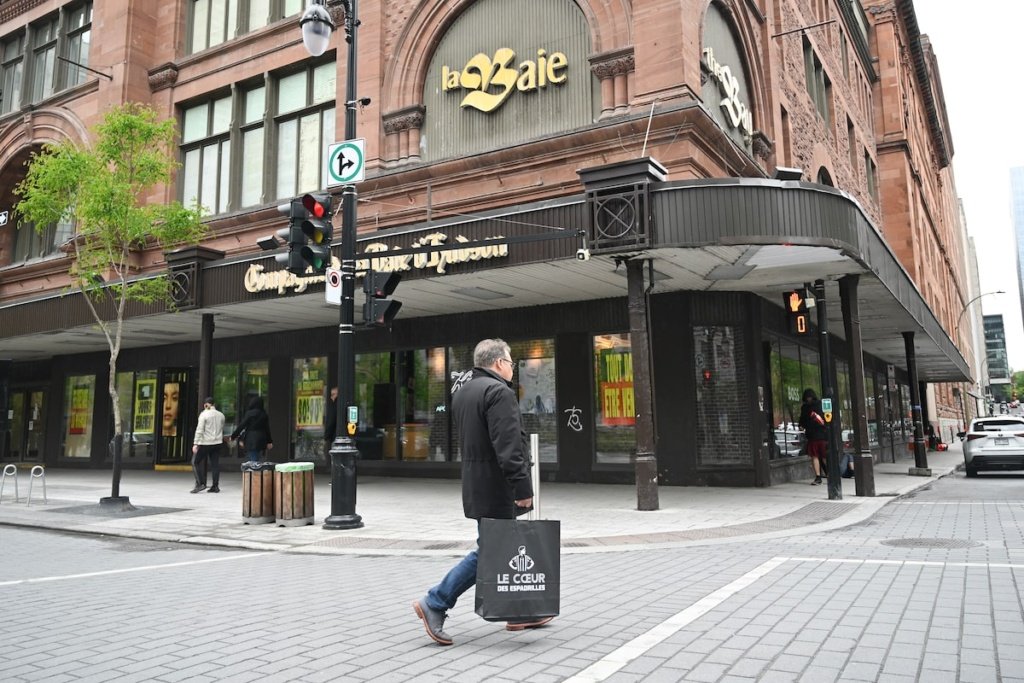Items in the collection include store paraphernalia, packaging, private-brand items, company awards and plaques and other retail memorabilia.Graham Hughes/The Canadian Press
Hudson’s Bay will begin auctioning off hundreds of pieces of store memorabilia, art and other artifacts in November – another step in the dissolution of Canada’s oldest retailer.
The auction process was approved at the Ontario Superior Court of Justice in Toronto on Thursday and applies to the company’s collection of more than 1,700 pieces of art and more than 2,700 artifacts.
The process does not include the sale of the 1670 royal charter that launched the company. It will be the subject of another court hearing on Sept. 29 to approve a separate auction for that historic document.
The fall of Hudson’s Bay: How Richard Baker presided over the failure of a retail icon
The broader collection includes a number of pieces related to Hudson’s Bay’s operation as one of Canada’s largest department store chains. The company used to have a much broader trove of artifacts stretching over its 355-year history, dating back to its origins as a fur-trading behemoth.
But those historic artifacts are not affected by the company’s bankruptcy proceedings because the majority were donated to the Manitoba Museum in 1994. The company’s oldest records, maps, fur-trading journals and other documents were also donated at that time to the Archives of Manitoba.
Items in the collection include store paraphernalia, packaging, private-brand items, company awards and plaques and other retail memorabilia. The art collection primarily comprises Canadian works and includes 17th- and 18th-century portraits, historical calendar paintings, Inuit prints and sculptures and photographic and limited-edition prints.
However, the company did recently identify 24 artifacts believed to be “potentially of Indigenous origin or uniquely representative of Indigenous culture,” Ashley Taylor, a lawyer with Stikeman Elliott LLP representing Hudson’s Bay, told the court Thursday.
Those items will not be part of the auction, and the company is consulting with Indigenous communities to ensure they are either returned to them or donated appropriately, Mr. Taylor said. If other significant artifacts are identified, the company also intends to exclude them from auction, he added.
Inside the final days of Hudson’s Bay
Hudson’s Bay also owns six war memorials – four of them on display in various cities across Canada and two in storage. They will be donated to organizations that commit to preserving them and putting them on public display, Mr. Taylor said.
Facing a financial crisis and unable to shoulder its more than $1-billion in debt, Hudson’s Bay sought court protection from its creditors in March under the Companies’ Creditors Arrangement Act. Since then, unable to restructure its operations or to save even a handful of the stores, the Bay has been forced to wind up its business and sell off whatever assets it owns to partly pay back some of its lenders.
The company determined it was not appropriate to include the art and artifacts in a broader sale process, and the court approved a separate process to sell that collection and the 1670 charter.
Fine art auction house Heffel will be handling the sale of the wider collection. The company will seek court approval on Monday for Reflect Advisors LLC, the financial advisory firm overseeing the sale, to act as auctioneer for the charter.
Heffel will designate certain pieces for a live, in-person auction scheduled for Nov. 19; other items, to be advertised on Heffel’s website shortly, will be sold in a series of online auctions beginning Nov. 12.

